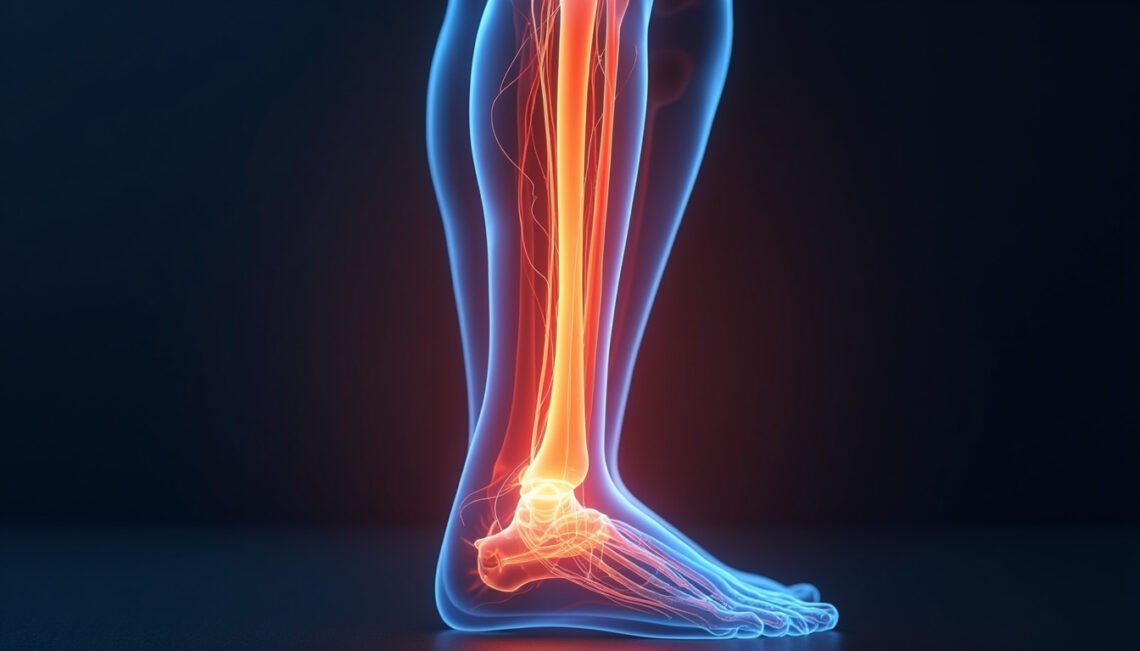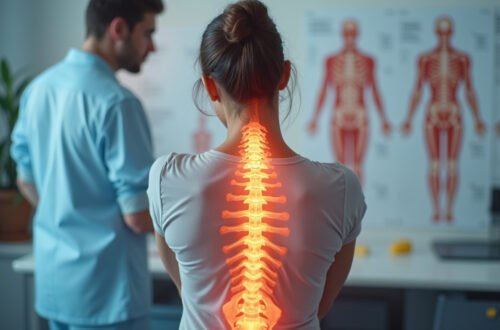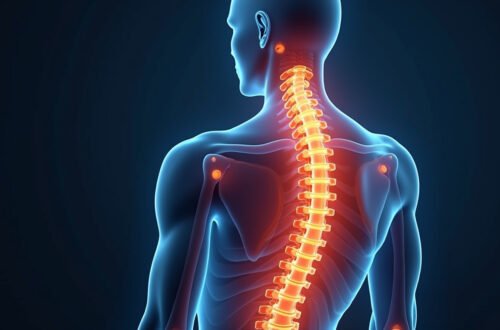Understanding sciatic nerve anatomy is essential for anyone experiencing lower back pain, leg discomfort, or seeking effective strategies for sciatic nerve pain relief. The sciatic nerve is the largest and longest nerve in the human body, playing a vital role in motor and sensory functions of the lower limbs. In this article, we delve into the key aspects of sciatic nerve anatomy, offer insights into common causes of sciatic nerve pain, and explore practical methods for pain relief and maintaining nerve health.
What Is the Sciatic Nerve?
The sciatic nerve is a major nerve extending from the lower back down to the feet. Originating from the lumbar and sacral spinal nerves (L4 to S3), it passes through the pelvis and runs down the buttocks and back of each leg. Because of its extensive reach, the sciatic nerve affects many muscles and areas in the lower body, making it critical in walking, running, and overall leg movement.
Detailed Sciatic Nerve Anatomy
Origin and Pathway
The sciatic nerve begins in the lower spine, where several nerve roots exit the vertebrae and combine to form the nerve. Here’s a brief overview of its pathway:
- Lumbar and sacral plexus: The nerve roots from these plexuses converge.
- Pelvic exit: The sciatic nerve exits the pelvis via the greater sciatic foramen, below the piriformis muscle.
- Course along the leg: It travels down the posterior thigh, sending off branches to the hamstrings and adductor magnus.
- Bifurcation point: In the region around the popliteal fossa (behind the knee), the sciatic nerve splits into two major nerves—the tibial nerve and the common fibular nerve—that supply the lower leg and foot.
Function and Importance
With motor and sensory components, the sciatic nerve enables muscle movement and transmits sensations such as pain, temperature, and touch. Damage or irritation to the sciatic nerve can result in symptoms like numbness, weakness, tingling, or severe pain along its distribution area—commonly known as sciatica.
Common Causes of Sciatic Nerve Pain
Understanding sciatic nerve anatomy can provide insights into why sciatic nerve pain develops. Here are the most common culprits:
- Herniated or bulging disc: When intervertebral discs protrude near lumbar nerve roots, they compress the sciatic nerve.
- Piriformis syndrome: The piriformis muscle, located near the nerve, can spasm or become tight, irritating the sciatic nerve.
- Spinal stenosis: Narrowing of the spinal canal puts pressure on the nerve roots.
- Degenerative changes: Arthritis or bone spurs in the lumbar spine may impinge upon the nerve.
- Trauma or injury: Direct injury to the buttocks or thigh can damage the sciatic nerve.
Signs and Symptoms of Sciatic Nerve Issues
Symptoms linked to sciatic nerve irritation vary but often include:
- Sharp, shooting pain starting in the lower back or buttock and radiating down the leg.
- Numbness or tingling sensations in the foot or leg.
- Muscle weakness affecting leg or foot movement.
- Difficulty sitting or standing for long periods due to pain.
Recognizing these symptoms early and understanding their relation to sciatic nerve anatomy helps in timely treatment and management.
Diagnosing Sciatic Nerve Problems
Diagnosis typically involves a combination of:
- Physical examination: Testing muscle strength, reflexes, and sensory responses.
- Imaging tests: MRI or CT scans reveal disc herniation, spinal stenosis, or other structural abnormalities affecting the sciatic nerve.
- Nerve conduction studies: Measure electrical impulses to assess nerve function.
Accurate understanding of sciatic nerve anatomy aids clinicians in pinpointing the problem’s root cause.
Effective Strategies for Sciatic Nerve Pain Relief
If you suffer from sciatic nerve pain, several treatments focus on relieving pressure on the nerve and restoring function. Consider these approaches:
1. Physical Therapy and Exercises
Gentle stretching and strengthening exercises targeting the lower back, hips, and hamstrings help alleviate sciatic nerve compression. Some effective stretches include:
- Piriformis stretch
- Hamstring stretch
- Pelvic tilts
2. Medications
Over-the-counter pain relievers, anti-inflammatory drugs, or muscle relaxants can reduce inflammation and ease pain. For severe cases, doctors may prescribe stronger medications or corticosteroid injections near the nerve.
3. Lifestyle Adjustments
- Maintain proper posture, especially when sitting or standing.
- Avoid heavy lifting that strains the lower back.
- Apply heat or cold packs to reduce muscle spasms and inflammation.
4. Surgical Interventions
If conservative treatments fail or nerve damage worsens, surgical options such as microdiscectomy or laminectomy might be necessary to relieve nerve pressure.
Maintaining Sciatic Nerve Health: Tips and Best Practices
Prevention is just as important as treatment when it comes to sciatic nerve pain. Here’s how you can maintain sciatic nerve health:
- Stay active: Engage in regular low-impact aerobic exercises like walking or swimming.
- Strengthen core muscles: This supports the lower spine and reduces nerve pressure.
- Maintain healthy weight: Extra weight stresses the spine and nerves.
- Use ergonomic furniture: Proper support reduces nerve irritation.
- Avoid prolonged sitting: Stand up and stretch frequently to prevent nerve compression.
Quick Reference: Sciatic Nerve Anatomy Facts
- The sciatic nerve is the biggest nerve in the body.
- It originates from nerve roots L4 to S3 in the spine.
- It travels from the lower back through the buttocks and down the back of the thigh.
- The nerve branches into the tibial and common fibular nerves near the knee.
- It controls motor and sensory functions in the legs and feet.
Frequently Asked Questions (FAQ)
Q1: Where is the sciatic nerve located in the body?
A1: The sciatic nerve originates from the lower back’s lumbar and sacral spinal nerves and extends down the back of the buttocks and thigh to the feet.
Q2: How can I tell if my sciatic nerve is irritated or damaged?
A2: Common signs include shooting pain down the leg, numbness, tingling, and muscle weakness, particularly in areas served by the sciatic nerve.
Q3: What exercises help with sciatica based on sciatic nerve anatomy?
A3: Exercises focusing on stretching the piriformis muscle and hamstrings, plus strengthening core muscles, can relieve pressure on the sciatic nerve and reduce pain symptoms.
Understanding the Science and Staying Informed
Research continues to enhance our understanding of sciatic nerve anatomy and its role in pain management. For detailed clinical insights, the Mayo Clinic provides comprehensive resources on sciatica and sciatic nerve conditions (Mayo Clinic).

Take Control of Your Sciatic Nerve Health Today
Have you been experiencing persistent lower back or leg pain? Gaining a clear understanding of sciatic nerve anatomy empowers you to seek appropriate treatment and preventive care. Whether through physical therapy, lifestyle changes, or medical interventions, relief is within reach. Don’t let sciatic nerve pain control your life—consult a healthcare professional and take proactive steps towards lasting health and comfort. Your journey to pain relief and improved mobility starts with knowledge and action.






